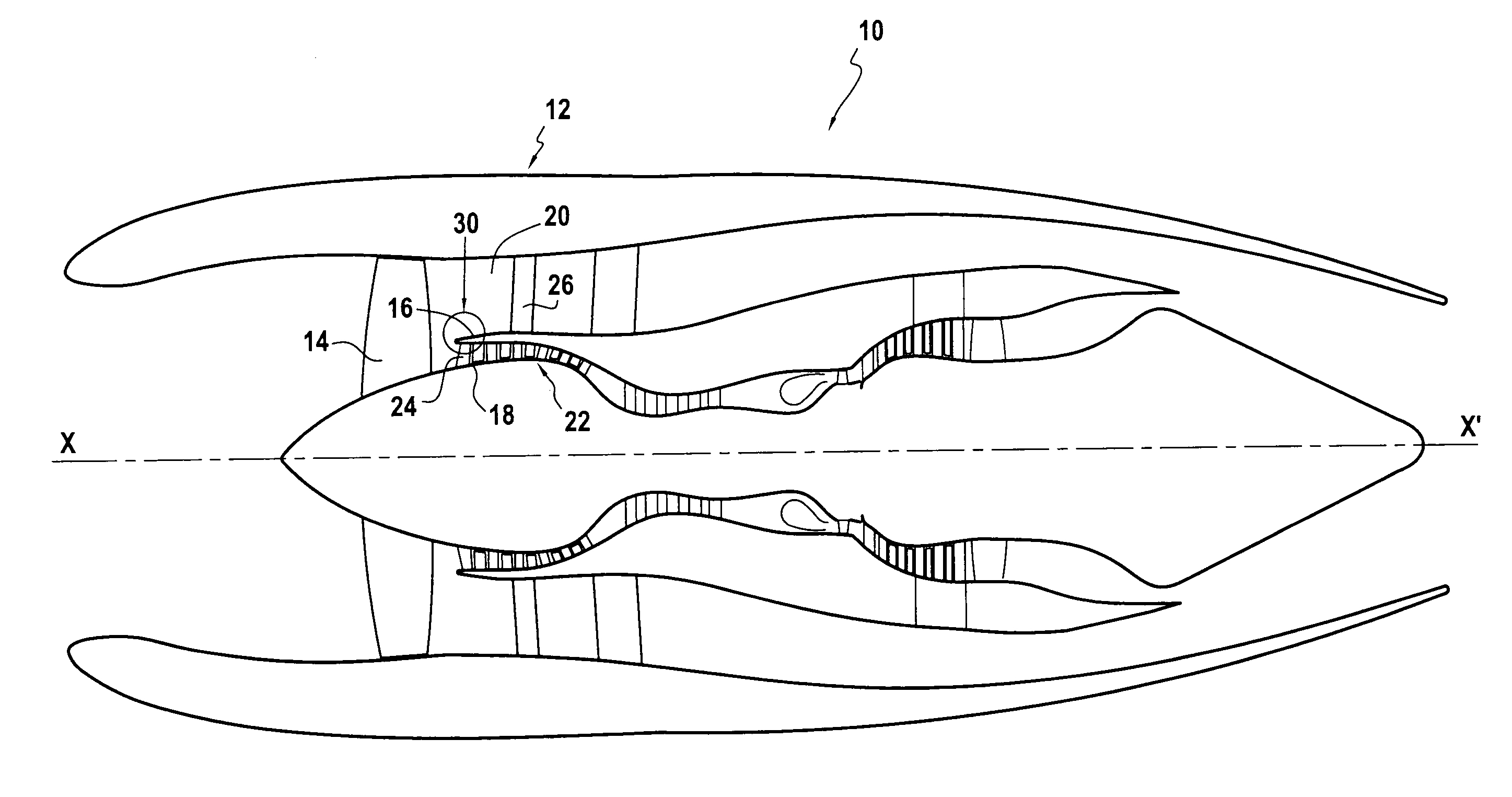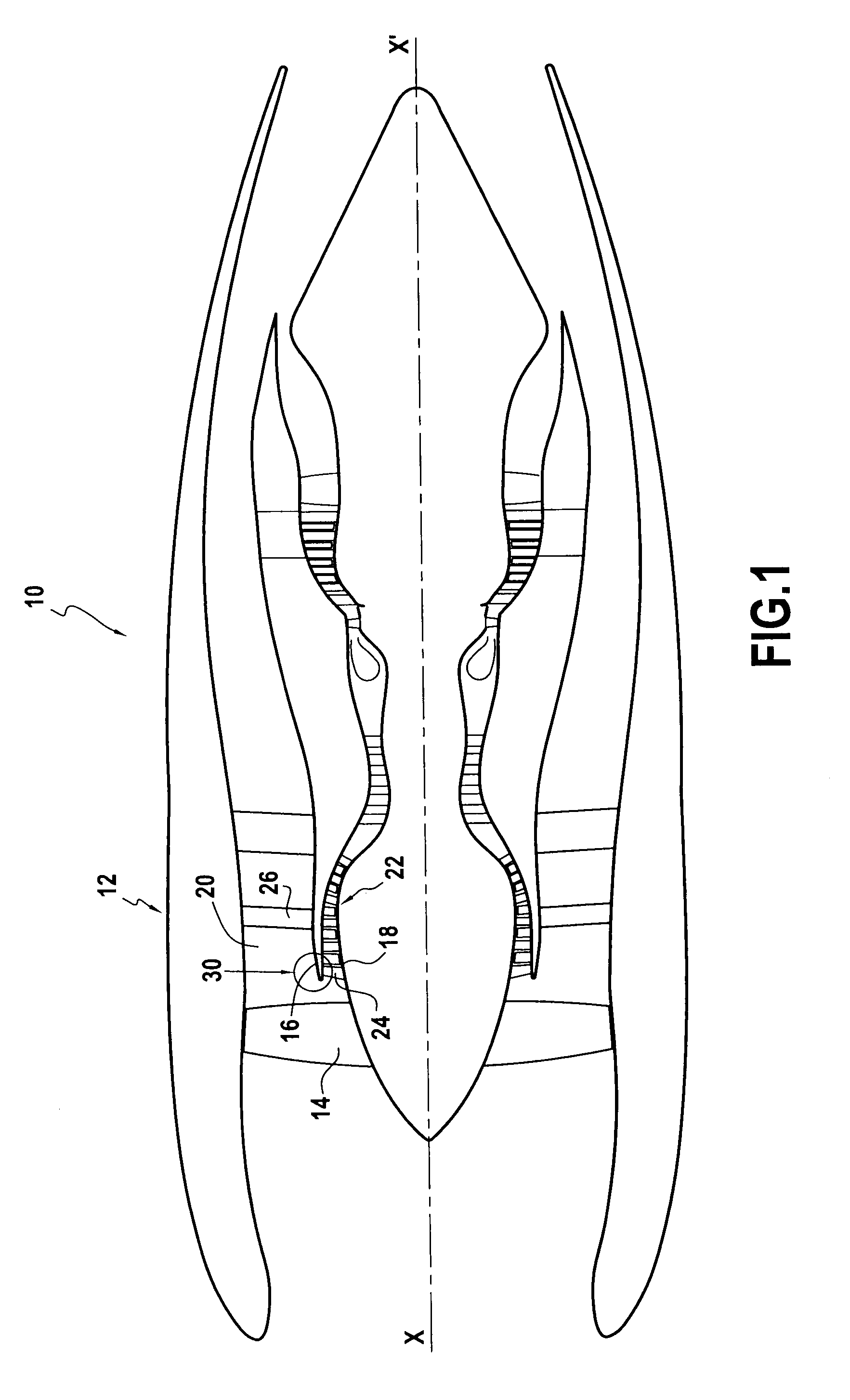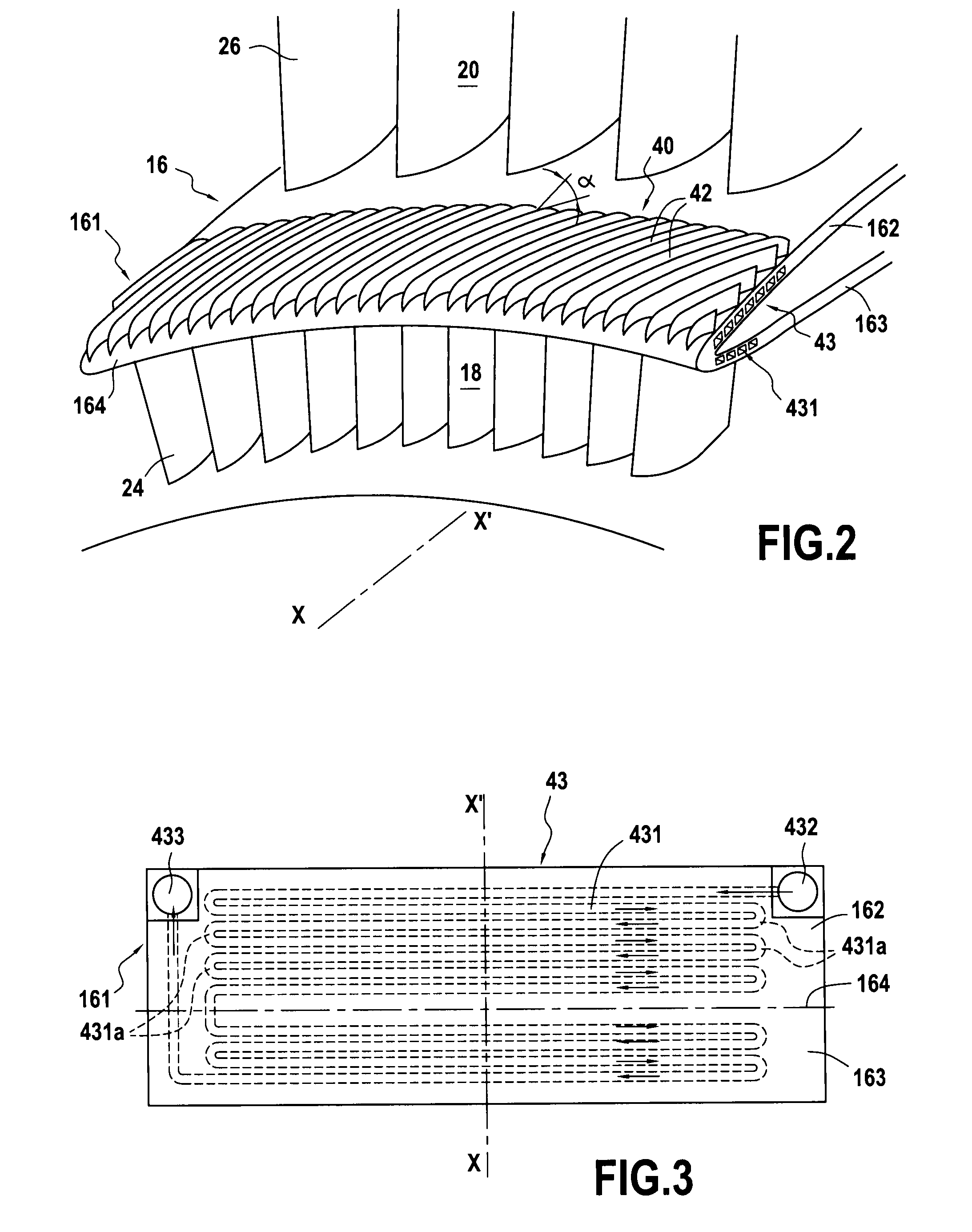Air-oil heat exchanger placed at the location of the air separator nose of a turbojet, and a turbojet including such an air-oil heat exchanger
a technology of air separator nose and air-oil heat exchanger, which is applied in the direction of air transportation, stationary conduit assembly, engine cooling apparatus, etc., can solve the problems of air-oil heat exchanger being nowadays unavoidable, increasing drag of the airplane, and dropping in the overall efficiency of the engine, so as to achieve no risk of being damaged
- Summary
- Abstract
- Description
- Claims
- Application Information
AI Technical Summary
Benefits of technology
Problems solved by technology
Method used
Image
Examples
first embodiment
[0053]In the first embodiment shown in greater detail in FIG. 2, the oil circuit 43 passes inside the top wall 162 of the separator nose 16 and inside the bottom wall 163 of the separator nose 16.
[0054]In this first embodiment, the oil circuit 43 forms a coil disposed within the thickness of the top wall 162 and of the bottom wall 162 of the separator nose 16.
[0055]In the configuration shown in FIGS. 2 and 3, the oil circuit 43 travels along the front portion 161 of the separator nose 16 in an essentially circumferential manner, with segments 431 of the oil circuit 43 being annular about the axis (X-X′) of the turbojet and mutually parallel. These almost annular circumferential segments 431 are interconnected by bends 431a (see FIG. 3) so that the oil flow goes from one segment 431 of the oil circuit 43 to the next in a direction opposite to the flow direction of the secondary air stream.
[0056]By way of example, these segments 431 of the oil circuit 43 may be hollow channels formed ...
second embodiment
[0077]In another variant (not shown) of this second embodiment, only the first oil flow unit 43a′ is used.
[0078]In the variant of the first embodiment or of the second embodiment in which the oil circuit is present only at the location of the top wall 162 of the separator nose 16, provision can be made, as shown in FIG. 9 for the first embodiment, for the air-oil heat exchanger 40 also to include a thermal bridge 50 interconnecting the top wall 162 and the bottom wall 163 of the front portion 161 of the separator nose 16.
[0079]In FIG. 9, this thermal bridge 50 is a plate interconnecting the bottom face of the top wall 162 in the oil circuit zone to the top face of the bottom wall 163. The thermal bridge 50 is made of one or more materials that are good conductors of heat, such as aluminum.
[0080]As a result, there is better transfer heat between the top wall 162 and the bottom wall 163 because of the heat that is conducted via the thermal bridge from the oil circuit of the top wall 1...
PUM
 Login to View More
Login to View More Abstract
Description
Claims
Application Information
 Login to View More
Login to View More - R&D
- Intellectual Property
- Life Sciences
- Materials
- Tech Scout
- Unparalleled Data Quality
- Higher Quality Content
- 60% Fewer Hallucinations
Browse by: Latest US Patents, China's latest patents, Technical Efficacy Thesaurus, Application Domain, Technology Topic, Popular Technical Reports.
© 2025 PatSnap. All rights reserved.Legal|Privacy policy|Modern Slavery Act Transparency Statement|Sitemap|About US| Contact US: help@patsnap.com



